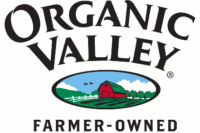The dairy industry needs more customers, and not only that, it needs to hold on to those it already has. That was a recurring theme in the reporting and interviews conducted by Dairy Foods writers in preparing the 2010 State of the Industry report, beginning on page 25.
So, how does that happen? Here are six tactics and strategies:
1. Convert lactose-intolerant Americans to dairy users.
2. Take back customers the industry lost to juices, water and sports drinks.
3. Develop new “better-for-you” products.
4. Create meaningful marketing messages.
5. Use social media, pop-up shops and contests to create excitement about dairy.
6. Export.
One. “If the industry could increase the current milk consumption rate among lactose-intolerant individuals to be on par with the lactose-tolerant population’s consumption rate and bring lactose-intolerant individuals who don’t currently drink milk, but are open to it, back into the category, the industry could achieve 273 million gallons of incremental growth,” states a Dairy Management Inc. report.
Four out of five people surveyed who experience lactose-intolerant symptoms said they would add more milk and other dairy foods to their diets if they knew they could avoid symptoms. Even though there are products on the shelves, the lactose-intolerant population is under-served, DMI states. “With the right products, information and positioning messages, the dairy industry can meet the health and enjoyment needs of lactose-intolerant consumers and gain long-term loyalty, generation after generation,” according to the report.
Two. Over the years, the beverage industry has snuck into dairy’s clubhouse and stole its playbook. Orange juice touts its calcium content. Sports drinks trumpet their potassium. Water has added vitamins. Milk has all that and more, naturally. The dairy industry has to fight back with marketing and education.
Milk also has protein, and that is an ingredient brand marketers need to push, according to another DMI presentation titled “Emerging Diet Trends & The Opportunity for Dairy,” which was delivered at the International Dairy Show in September. One diet trend is eating less meat. As Americans cut back on steaks and chops, they worry about getting enough protein. Of those who now eat less meat, 24% say they are drinking more milk and eating more cheese and yogurt. Yet consumers are not as savvy about dairy’s protein content as they are about its calcium and Vitamin D content. Marketers have an opportunity to tout protein, DMI suggests.
In the locker room, athletes should be grabbing a bottle of chocolate milk instead of a sports drink. Research from the University of Connecticut shows that chocolate milk speeds recovery after a hard workout. “The chocolate adds a little more sugar, and hence carbohydrate,” researcher Nancy Rodriguez told the Hartford Courant newspaper. “Carbs - that’s still the energy that helps the muscle do the work. But you want milk to rebuild the muscle.”
Three and four. “Better-for-you,” “buy local” and “organic” labels are messages that resonate with shoppers. Dairy processors and brand managers are developing products that can wear these words on their packaging. Frozen fruit bars made with pomegranate, blueberries and acai are wrapped (literally) in this “better-for-you” message. These products, with their antioxidant claims, bring new consumers to the frozen-food aisle.
Dean Foods recognizes the opportunity in the “buy local” message. A company spokesperson told me, “Many consumers are focusing on eating more local foods. As the largest dairy processor with approximately 100 plants across the country, we are able to deliver locally but be a national partner to key retailers.”
Five. Besides the message, brand managers are going beyond the grocery circular and free-standing insert to reach shoppers. Who doesn’t have a Facebook page or an interactive website that engages loyal customers?
Contests, like one by Turkey Hill Dairy, and on-site marketing, like that of the California Milk Processor Board (CMPB), get shoppers involved with the brand and the products. Turkey Hill asked fans to redesign its iconic 13-foot-tall traveling Giant Cow. The winner receives free ice cream for a year and other prizes. CMPB set up a kiosk at a Macy’s cosmetic counter to connect the dots from dairy product consumption to healthy skin and hair.
Six. If you can’t find enough customers here in the United States, export. That’s what United Dairymen of Arizona did. (See page 22.)
The dairy industry makes nutritious foods that taste good. So do other industries. Dairy has to pump up the volume of its marketing messages. I encourage you to share with me your successes in new product development, marketing campaigns and special events.
Meet Our Hall of Famer
This month, Mike Richmond was inducted into the Packaging Hall of Fame of the Packaging Machinery Manufacturers Institute. Richmond, co-founder of Packaging & Technology Integrated Solutions, Shelbyville, Mich., has been writing the Packaging Points column for Dairy Foods for 10 years. His career spans food and packaging science and technology. Richmond helped develop the Essentials for Sustainable Packaging and led the Future of Packaging program, a long-term look at the drivers and technology that will shape packaging’s next decade.Congratulations to Mike Richmond.


